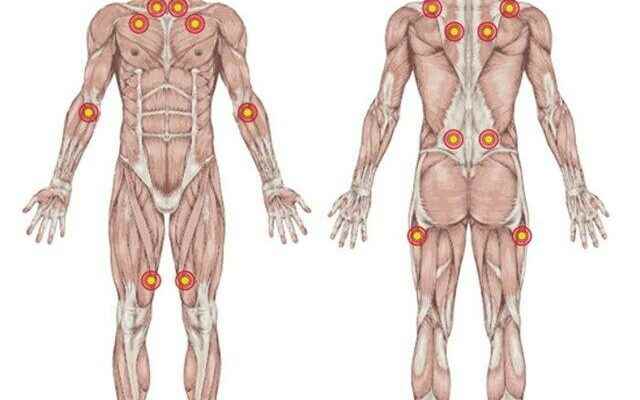In recent years, the symptoms and treatment of fibromyalgia disease have been a matter of curiosity, especially with the increasing complaints after the pandemic. If you often use phrases such as “My body aches never go away, I feel like I can’t get enough sleep no matter how hard I sleep, I feel tired all the time, my memory is very bad, I can’t remember anything”, you may also have fibromyalgia. The absence of a test and diagnostic method for the detection of the disease makes the diagnosis of this disease difficult. So much so that many fibromyalgia patients go from doctor to doctor for the problems they experience and cannot get results. However, it is possible to understand whether a person has fibromyalgia with several different methods.
WHAT IS FIBROMYALGIA?
Physical Therapy and Rehabilitation Specialist Assoc. Dr. Zeynep Iyigun warned about fibromyalgia. Underlining that fibromyalgia is a chronic condition that causes widespread pain in the body, Assoc. Dr. Zeynep Iyigun, “Fibromyalgia is caused by a problem in the way the nervous system processes pain signals. In addition to the feeling of pain that spreads throughout the body, the pain can intensify in areas such as the back and neck, and this feeling can also manifest itself in the form of burning and stinging.
HOW IS FIBROMYALGIA DIAGNOSED?
Since the common symptoms of the disease, which is often described as ‘invisible’, can be seen in many health problems, many blood tests and imaging methods are needed before the diagnosis is made. These examinations are performed in order to exclude other possible diseases. The diagnosis of fibromyalgia is made with the clinical findings and examination of the patient.

For this reason, accurately describing the type, location and other symptoms of the pain can be of great help in making the diagnosis. For the detection of fibromyalgia, patients are usually referred to different areas such as the rheumatology department or psychologist.
MEMORY PROBLEMS CAN ALSO BE A SYMPTOM OF FIBROMYALGIA!

Fibromyalgia, which is described as an “invisible disease” because it progresses unnoticed, can progress for months without showing any symptoms. Other common symptoms of the disease are:
- chronic fatigue,
- low energy,
- sleep problems,
- Confusion,
- Psychological problems such as depression, anxiety,
- Memory and concentration problems
- chronic headache,
- muscle twitches and cramps,
- Numbness and tingling in hands and feet
- pain in various parts of the body,
- eye disorders,
- irritable bowel syndrome,
- Restless legs syndrome.
CAN MAKE CONCENTRATION PROBLEMS!
Explaining that chronic fatigue, which is among the common symptoms, should not be confused with ordinary fatigue, Assoc. Dr. Iyigun stated that fibromyalgia fatigue is a feature that consumes the body’s energy.

Good day, about insomnia, which is one of the symptoms of the disease, “However, the detected sleep disorder is not always insomnia, the main problem here is the inefficient sleep of the patient. Patients wake up unrest from sleep. Memory problems, on the other hand, are usually in the form of not being able to focus on the work being done, and sometimes even not understanding what is being said. In the literature, this situation is defined as ‘fibrofog-fibromyalgia fog’”.
DESKTOP EMPLOYEES MUST EXERCISE

Exercising is of great importance for eliminating muscle problems and increasing the quality of life, especially for those who work at a desk or adopt a sedentary lifestyle. Since fibromyalgia is a disease in which pain is felt in the muscles, appropriate exercises can be used in its treatment.
IT IS POSSIBLE TO IMPROVE YOUR QUALITY OF LIFE
Although it is not yet possible to completely cure fibromyalgia, which affects the quality of life to a large extent, it is possible for patients to improve their quality of life with some measures.
Assoc. Dr. Zeynep Iyigun made the following recommendations regarding treatment methods:
“The most effective method for the improvement of fibromyalgia symptoms is exercise treatments. Do not forget that exercises that increase the heart rate to a certain level, which we call aerobics, should be done regularly, regular use of drug treatments that your doctor requires, use of applications such as massage and physical therapy that can reduce pain, regulation of sleep, regulation of nutrition and other diseases accompanying fibromyalgia should be treated.
